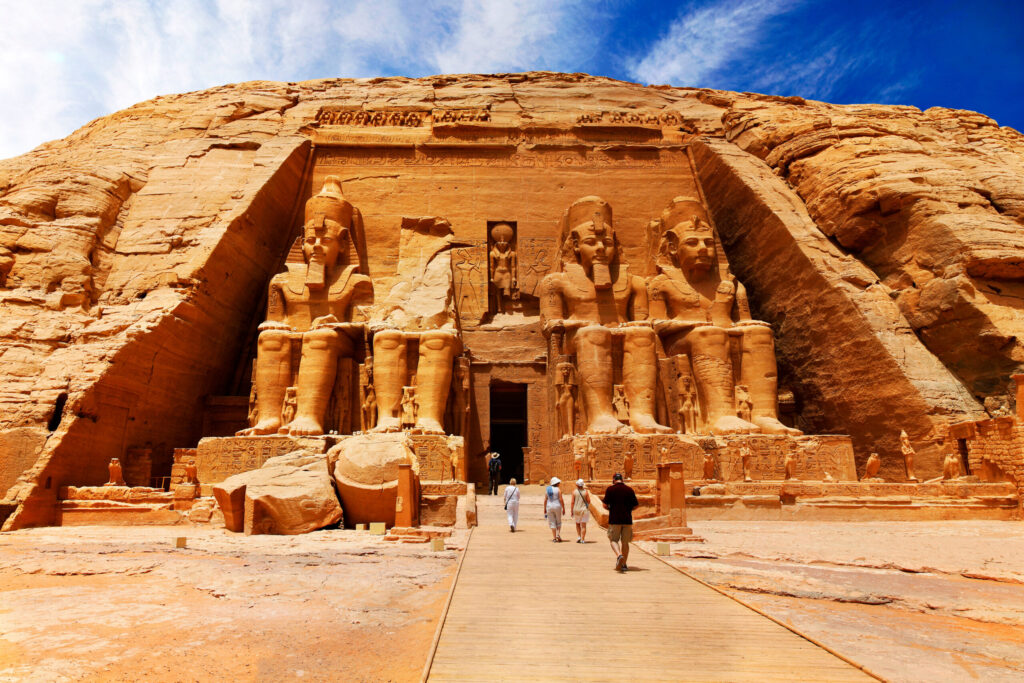Introduction to the Abu Simbel Temples
The Abu Simbel Temples, constructed in the 13th century BCE during the reign of Pharaoh Ramesses II, stand as one of the most remarkable monuments of ancient Egypt. Located on the banks of the Nile River, these temples are not only a symbol of royal power and strength but also a testament to the intersection of art, engineering, and spirituality in ancient Egyptian civilization.
The History and Significance of Abu Simbel
The Grand Creation of Pharaoh Ramesses II
Pharaoh Ramesses II, one of Egypt’s most powerful rulers, commissioned Abu Simbel to assert his authority not only to the gods but also to neighboring nations. The two main temples at this site are dedicated to the gods Amun, Ra-Horakhty, and Ramesses II himself, emphasizing the pharaoh’s divine connection.
A Political and Religious Symbol
Beyond its religious significance, Abu Simbel served as a political symbol, particularly during a time when Egypt frequently faced foreign threats. The colossal statues of Ramesses II not only represented his might but also acted as a warning to any potential adversaries.

Intricate Architecture and Design
Impressive Scale and Proportions
Abu Simbel leaves a lasting impression with its four colossal statues of Ramesses II, each towering over 20 meters high and carved directly into the rock face. Inside, the symmetrical design of corridors and sanctuaries creates a harmonious and awe-inspiring atmosphere.
The Phenomenon of the “Sunlight Illumination”
One of Abu Simbel’s most extraordinary features is the astronomical alignment that occurs twice a year. During this event, sunlight penetrates the temple’s inner sanctuary, illuminating the statues of the gods and Ramesses II. This precise alignment showcases the Egyptians’ advanced engineering skills and deep knowledge of astronomy.
Sculpture and Artistic Decoration
The walls of Abu Simbel are adorned with exquisite carvings depicting military victories, religious rituals, and royal life. The vibrant hieroglyphs, remarkably well-preserved, continue to offer insights into the culture and beliefs of the New Kingdom, providing a vivid connection to the past.

The Miraculous Relocation of the 20th Century
In the 1960s, to prevent submersion from the rising waters caused by the Aswan High Dam project, the Abu Simbel temples were dismantled and relocated 65 meters higher. This monumental effort remains one of the greatest feats of modern heritage preservation, reflecting the international community’s commitment to safeguarding cultural treasures.
The Enduring Legacy of Abu Simbel
Abu Simbel is not only a symbol of Egypt but also a shared heritage of humanity. Its grandeur and profound significance remind us of the boundless creativity of ancient civilizations and the connection between the past, present, and future.
Conclusion
The Abu Simbel Temples are timeless masterpieces that testify to the talent, intellect, and faith of ancient Egyptians. Their majestic beauty and rich history attract not only archaeology enthusiasts but also inspire admiration for a civilization that flourished thousands of years ago. A visit to Abu Simbel is a journey through history, art, and the indomitable human spirit.
